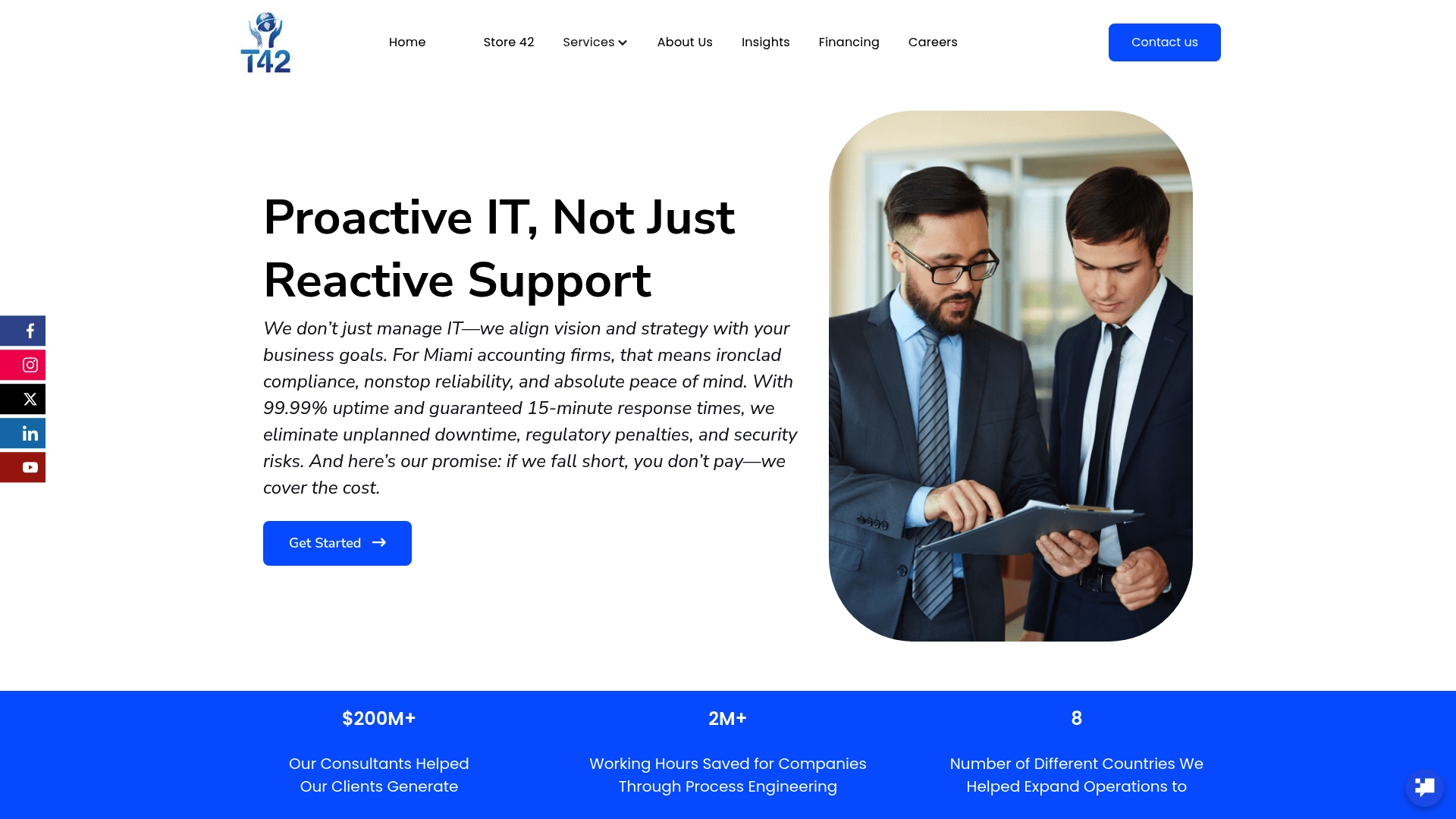
Did you know that over 60 percent of accounting tasks can be automated today? With workloads piling up and manual mistakes costing firms both time and money, finding smarter ways to handle everyday processes has never been more urgent. When you choose the right workflows to automate, your practice stands to gain greater accuracy, faster results, and a much lighter burden for your team.
| Key Point | Explanation |
|---|---|
| 1. Identify automation candidates first | Focus on repetitive, high-volume tasks like payroll and accounts payable for automation opportunities. |
| 2. Map current workflows thoroughly | Documenting each process helps uncover inefficiencies and informs automation strategy for greater clarity. |
| 3. Choose compatible automation tools | Select tools that integrate well with existing systems to streamline implementation and enhance productivity. |
| 4. Implement gradually, train effectively | Initiate automation with one or two processes and provide staff training to ensure smooth transition and understanding. |
| 5. Monitor and refine automated workflows | Continuously track key performance indicators to validate automation effectiveness and identify areas for improvement. |
In this critical first step, you’ll pinpoint which accounting workflows are ripe for automation and set the foundation for transforming your practice’s efficiency. By strategically selecting the right processes, you’ll minimize manual errors and free up valuable time for strategic work.
Start by mapping out your current workflows and examining which tasks consume most of your team’s time. According to research from NetSuite, high-impact accounting tasks ideal for automation typically include accounts payable, accounts receivable, payroll, month-end close, procurement, expense reports, and sales order processing. These areas share common characteristics: they are repetitive, high-volume, and historically prone to human error.

Here’s a summary of key accounting processes ideal for automation:
| Process | Common Challenges | Automation Benefit |
|---|---|---|
| Accounts Payable | Manual entry Delays |
Fewer errors Faster approvals |
| Accounts Receivable | Missed invoices Follow-up |
Improved cash flow Automated reminders |
| Payroll | Errors Compliance |
Accurate payments Timely filing |
| Month-End Close | Time consuming Complex steps |
Reduced workload Streamlined reconciliation |
| Procurement | Approval bottlenecks Manual tracking |
Centralized process Faster purchasing |
| Expense Reports | Lost receipts Manual checks |
Automated reporting Reduced fraud |
| Sales Order Processing | Data duplication Slow fulfillment |
Integrated orders Quicker delivery |
Look for processes that meet these key automation criteria:
Practical tip: Create a spreadsheet tracking each workflow’s time consumption, error rate, and complexity. This will help you systematically prioritize which processes to automate first. Explore our guide on business process mapping to help you document your workflows effectively.
Your next move is to assess the potential impact and feasibility of automating each identified process. Some processes will offer immediate efficiency gains, while others might require more complex implementation strategies.
In this essential step, you will create a comprehensive snapshot of your current accounting processes by documenting every workflow and uncovering hidden inefficiencies that could be streamlined through automation. Your goal is to build a clear roadmap that reveals exactly where technology can transform your practice.
According to the Financial Cents 2025 report, documenting existing workflows requires a systematic and observant approach. Start by shadowing your team and tracking the actual time spent on critical tasks like client scheduling, document collection, and data entry. Break down each process into granular steps documenting who performs the task, how long it takes, and what tools are currently used.
Specifically focus on capturing these workflow details:
As NetSuite recommends, evaluate which tasks are repetitive and rule-based. These are prime candidates for automation. Pay special attention to processes that involve:
Warning: Avoid making assumptions. Actually time and document each workflow to get accurate insights. A stopwatch and detailed notepad will be your best friends during this mapping exercise.

Your guide on business process mapping can provide additional techniques for creating a comprehensive workflow documentation strategy. Your next step will be analyzing these mapped workflows to determine specific automation opportunities.
In this crucial stage, you will choose and customize automation technologies that align perfectly with your accounting firm’s unique workflows and transform how your team operates. Think of this process as finding the right digital teammates who understand your business rhythm.
According to Vintti’s comprehensive review, several specialized tools can address different accounting needs. For example, TaxDome offers robust tax workflow management while FloQast streamlines month-end closing processes with automated checklists and reminders. When selecting your tools, prioritize platforms that integrate seamlessly with your existing systems.
Consider these key criteria when evaluating automation tools:
NetSuite recommends a strategic approach to tool selection. Start by defining clear workflow requirements including specific triggers, desired actions, and expected outcomes. Map out exactly how each tool will interact with your existing processes. Look for solutions that offer:
Warning: Avoid the temptation to automate everything at once. Start with one or two critical processes and gradually expand your automation strategy.
Explore our guide on business process mapping to help refine your tool selection approach. Your next step will involve implementing and testing these selected automation solutions to ensure they deliver the efficiency gains you need.
In this pivotal stage, you will transform your carefully mapped workflows into living automated systems while ensuring your team is fully prepared to embrace these technological changes. Your success hinges on thoughtful implementation and comprehensive staff training.
According to the Financial Cents report, successful automation fundamentally depends on team buy-in and strategic change management. This means you cannot simply drop new technology into your workflow and expect instant results. Instead, create a collaborative environment where your team understands and appreciates how automation will make their work more efficient and meaningful.
Start your implementation with a phased approach:
NetSuite recommends extensive testing and iteration after implementation. This involves carefully validating that each automated workflow performs exactly as intended. Involve your staff actively in this validation process so they become invested in the new systems and can provide critical insights about real-world performance.
Key training elements should include:
Warning: Resist the temptation to automate everything simultaneously. Gradual implementation prevents overwhelm and allows your team to adapt smoothly.
Explore our guide on business process automation to support your implementation strategy. Your next step involves monitoring and continuously refining your automated workflows to maximize efficiency.
In this critical final stage, you will transform your automated workflows from experimental processes into reliable, high-performance systems that consistently deliver measurable business value. Your goal is to create a continuous improvement cycle that validates and enhances your automation investments.
According to the Financial Cents report, successful firms track specific performance metrics after automation implementation. They discovered substantial time savings including dramatic reductions in scheduling time and significant improvements in document turnaround speed. You will want to establish similar benchmark metrics specific to your accounting practice.
Key performance indicators to monitor include:
The Journal of Accountancy highlights the emergence of intelligent process automation (IPA) which goes beyond simple task automation. This approach combines robotic process automation, artificial intelligence, and advanced technologies to enable more nuanced performance tracking and predictive adjustments.
Develop a systematic monitoring approach:
Warning: Performance monitoring is not a one-time event. Treat it as an ongoing process of continuous improvement and adaptation.
Explore our guide on business process automation to support your long-term automation strategy. Your next step involves maintaining flexibility and staying open to emerging technologies that can further optimize your accounting workflows.
You have spent time mapping your workflows, identifying repetitive bottlenecks, and searching for reliable ways to minimize errors. In the demanding world of Miami accounting, any delay can cost you business or put compliance at risk. You deserve nonstop uptime, secure automation, and a support team that responds as fast as you require.

Let Transform42 streamline your transition from manual accounting headaches to fully automated efficiency. We help Miami firms build resilient, secure, and reliable workflow automation strategies from the ground up. Clients depend on our business process mapping expertise to eliminate costly missteps and protect client data. When you partner with us, you never worry about downtime or regulatory penalties. If we do not deliver our 99.99 percent uptime and rapid 15-minute response, you do not pay. Take the next step toward seamless business process automation by visiting our main site right now. Do not wait until the next outage or compliance risk creates disruption—let’s secure your future today.
Automate high-impact tasks such as accounts payable, accounts receivable, payroll, and month-end close to enhance efficiency. Start by evaluating which of these processes are repetitive and time-consuming for your team.
Begin by tracking the time spent on each task and documenting every step involved in your accounting processes. Use tools like a detailed notepad or spreadsheet to capture the sequence of actions and identify areas for improvement.
Look for automation tools that integrate easily with your current software, meet your specific workflow requirements, and offer user-friendly interfaces. Prioritize tools that provide real-time reporting and customizable templates to align with your needs.
Implement a comprehensive training program that includes hands-on sessions and detailed walkthroughs of new systems. Allow team members to ask questions and provide feedback during the training phase to increase their confidence in using the new tools.
Focus on metrics such as time saved per workflow, error reduction rates, and overall team productivity. Establish these benchmarks to assess the impact of automation on your accounting practice and refine your processes accordingly.
Regularly review performance metrics and gather feedback from your team to identify areas for further enhancement. Schedule routine assessments to adapt your automation strategies based on your evolving business needs.